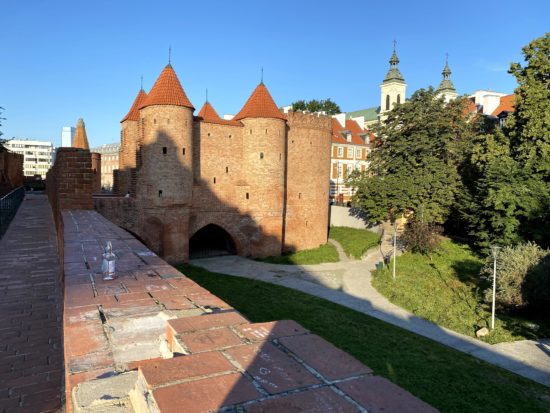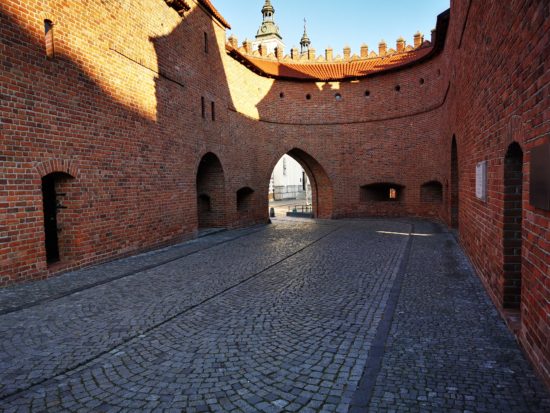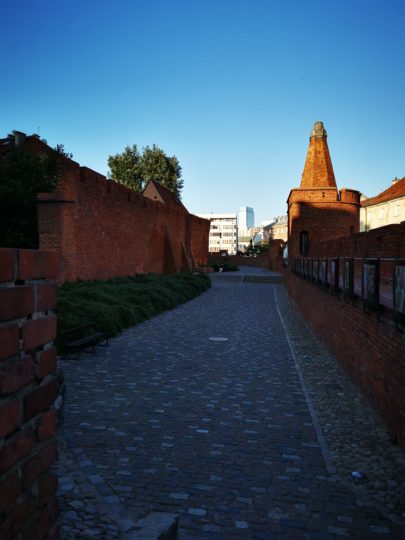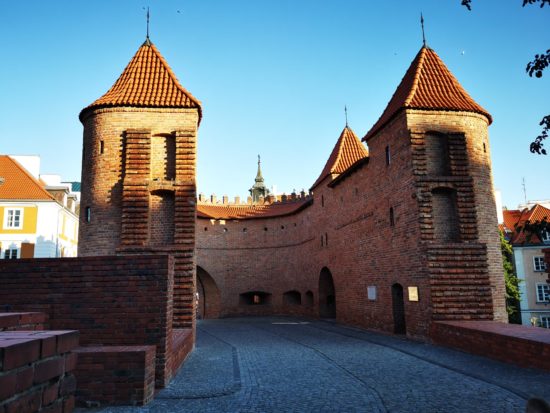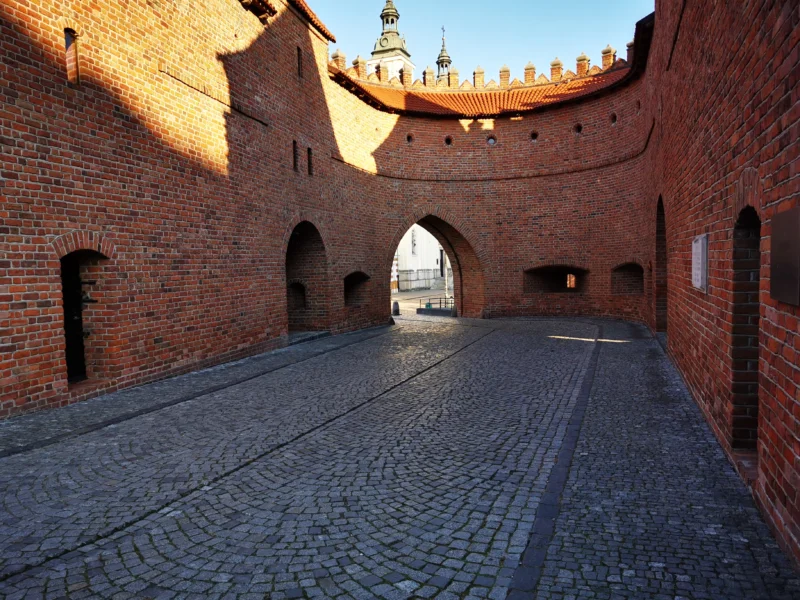
The Barbican is a fortified outpost in Warsaw, one of the few places that have survived from the fortifications of the 16th century that surrounded the whole of Warsaw. Located between the Old and New Town in Poland. During the Second World War, the barbican was almost completely destroyed. The place is very popular with tourists.
History
The Barbican was built in 1540 on the site of the old city gates, designed by the Venetian architect Giovanni Battista. It played an important role in the reconstruction of the fourteenth-century city walls, which at that time were in a poor state of repair. The barbican was a three-level semicircular bastion with positions for gunners. Its width was 14 meters, and the height from the bottom of the moat surrounding the city walls to the top reached 15 meters. It extended 30 meters from the city walls.
However, soon after its construction, the four-towered barbican became obsolete due to the development of artillery that was able to overcome its defensive capabilities. It was actually used only once, during the Swedish invasion of Poland, when in 1656 the Polish army under King Jan II Casimir wrested it from the Swedes.
In the 17th century, part of the barbican was dismantled as its defense value decreased and the city needed a larger gateway to control the movement of people and goods. In the nineteenth century, it became part of residential apartment buildings. Between 1937 and 1938, architect Jan Zachwatowicz reconstructed the city walls and the western part of the bridge, and one of the newest buildings was demolished. However, the complete reconstruction of the barbican was postponed due to limited funds, and the invasion of Poland by Nazi Germany in 1939 put an end to these plans.
During World War II, especially during the defense of Warsaw in 1939 and the Warsaw Uprising in 1944, the Barbican was almost completely destroyed, as was much of the Old Town. It was reconstructed between 1952 and 1954 based on 17th-century drawings in order to use it as a tourist attraction. The reconstruction included the use of bricks from demolished buildings from Nysa and Wrocław. The restored Barbican has become one of Warsaw’s most popular tourist spots. Here you can meet artists selling their paintings, as well as musicians and other street performers.

